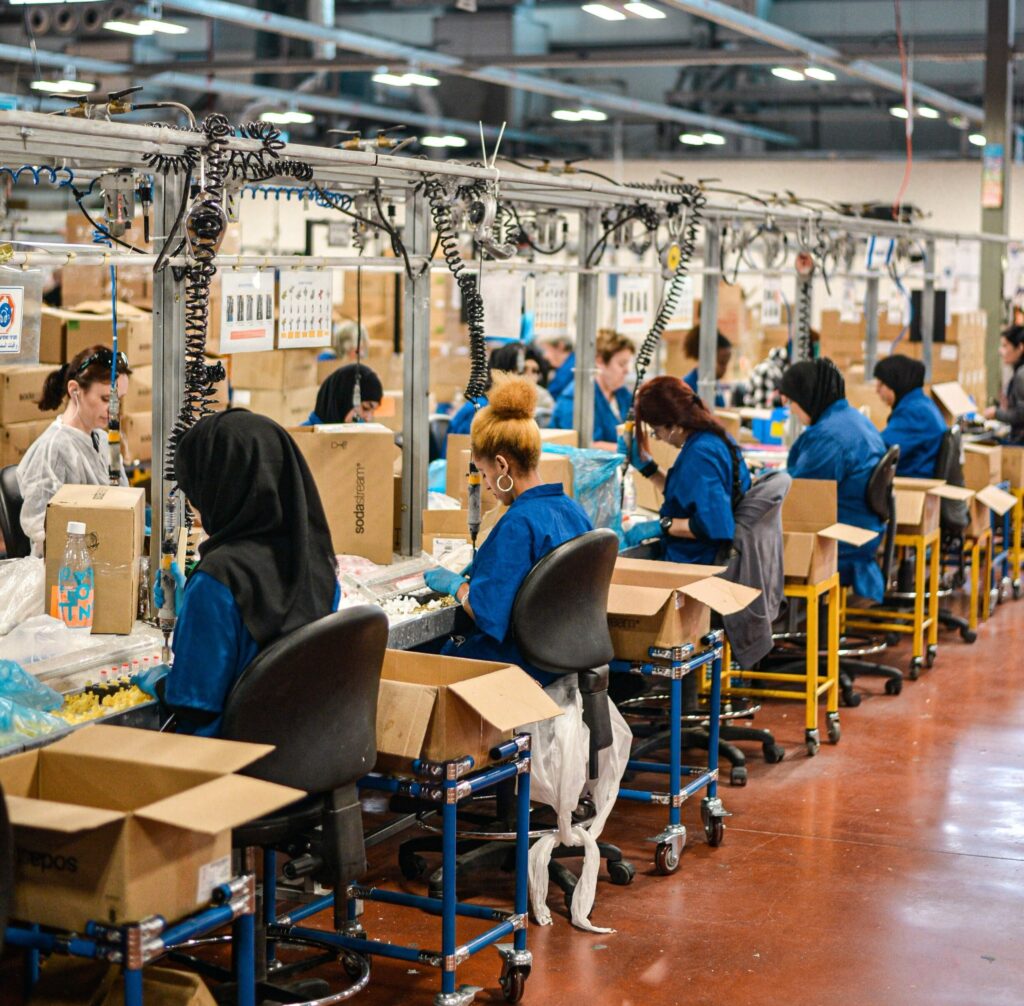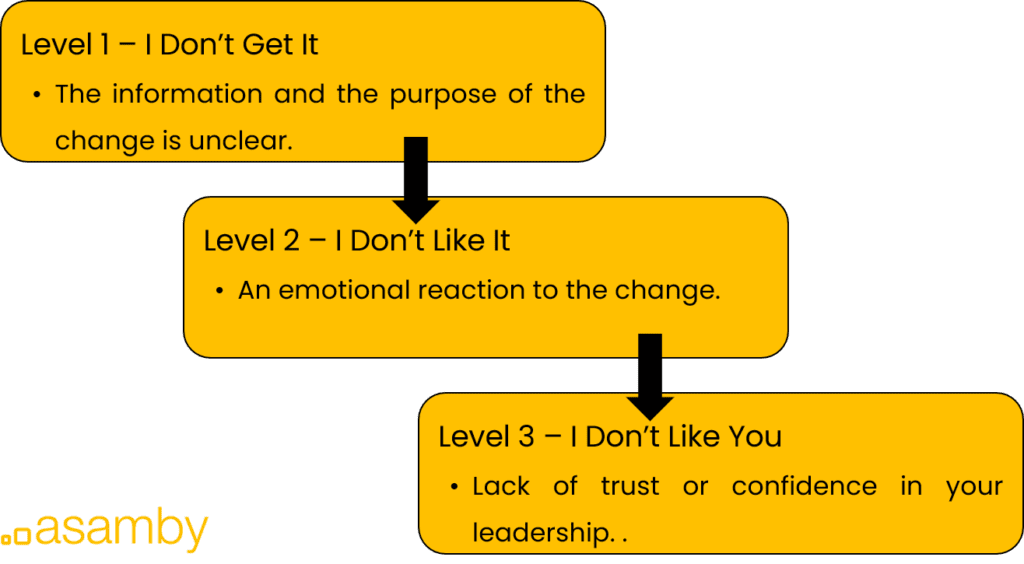
Innovation
In modern times, companies are focused on innovating. Salesforce, Tesla, Amazon, and Starbucks have been nominated as the World’s Most Innovative Companies by Forbes.
It is obvious that companies need innovation regardless of different industries. However, there are many companies that are not being innovative or innovating and their competitors are passing them by.
Do you ever wonder why your company is not innovative? In this blog post, we present to you the impact of innovation in an organization, 4 types of business innovation, challenges when implementing innovation, and 4 ways to fix it.
The Impact of Innovation in an Organization
Innovation has been a big part of human history. New and innovative products have brought economic growth, communication and educational accessibility, and environmental sustainability to the advancement of society.
Nevertheless, innovation has created practical benefits to organizations.
Although some certain industries rely heavily on innovation more than others, innovation is one of the critical skills for a business to achieve success.
The significant benefits of having innovation in an organization are:
- Reduced costs
- Improved productivity
- Increased competitiveness
- Increased turnover and improved profitability
REDUCED COSTS
Increased innovation in an organization can reduce costs. Imagine introducing a software system that allows you to digitize your business which reduces manual working activities.
Increased manual working activities means that you do not need that much employee and can lay some off.
IMPROVED PRODUCTIVITY
In order to improve productivity, you should streamline what you need to focus on and what you need to cut out.
Looking at the same example mentioned above. Implementing an innovative system in your business boosts up your process flow and allows you to work faster and smarter, which improves your productivity.
INCREASED COMPETITIVENESS
Competitive advantage means the capabilities of an organization that provide an edge in comparison to competitors.
In order for organizations to have the ability to get ahead of the competition, innovation is one of the most significant reason.
Innovative businesses are able to keep their operations and products relevant to the rapid changing market conditions.
INCREASED TURNOVER & IMPROVED PROFITABILITY
According to MIT SMR, there is a significant correlation between profit growth and more accepted ideas, which indicates that innovative companies are more profitable.
Innovation helps organizations optimize their business and stay competitive in the market as mentioned above. As a result, innovation increases the turnover and profit of a business.
4 Types of Business Innovation
Business innovation is the act of introducing something new to a company. In general, there are four types of innovations, namely product, process, service, technology or business model.
PRODUCT INNOVATION
Product innovation is the development and launch of a new product or improved versions of existing products. The purpose of product innovation is to make the product much more useful in which it meets the demands or creates the needs of consumers.
An example that most people use every day is a smartphone.
Apple introduced the first iPhone in 2007, since then, they would release a new version of iPhone every year. The latest version of iPhone is iPhone 13.

PROCESS INNOVATION
Process innovation is a combination of facilities, skills, and technologies that is used to produce, deliver, and support a product or provide a service.
Unlike product innovation which is tangible and visible to consumers, process innovation is typically only seen and valued internally of a business.
A famous example of process innovation is The Moving Assembly Line introduced by Ford Motor Company in 1913.
The Moving Assembly Line is a production process that breaks the manufacturing process into steps that are completed in a pre-defined sequence.
The method of assembly lines is still in use after 100 years in the mass production of products. It is valued by reducing costs of production rather than increasing revenue.

TECHNOLOGY INNOVATION
Technological innovation is a new or improved product or process whose technological characteristics are significantly different from before.
A good example of technology innovation can be the change from cell phone to smartphone.
Before iPhone was introduced to the world, Nokia owned the cell phone game, but the user experience was lacking as the technology was progressing.
Cellphones are devices used to make calls, send messages, and play games. Smartphones provided functions on top of cellphones with a touchscreen surface and internet access that focused on social media connections and taking good quality pictures, etc.
Smartphones had features that were never seen before.
BUSINESS MODEL INNOVATION
Business model outlines how a company plans to make money with its product and customers in their target market.
To innovate a business model is probably the most challenging of the innovation types because there will be major changes within an organization.
Companies like Airbnb, Uber, or Netflix are good representatives of business model innovation. They were able to disrupt age-old markets (hotel, taxi, movie) by changing their industry’s traditional business model.
The Challenges of Innovation in an Organization
It is in human nature that we would resist new ideas. Resistance is your body is actually protecting you from change. Nowadays, people resist new ideas for the following four reasons.
LACK OF CONFIDENCE
When employees do not trust or feel confident in the person making the change, there would be a rise of resistance to the change. The change causes fear among people. It interferes with autonomy, which makes people believe that they have lost control over what is coming next.
Ricky Maurer identified 3 levels of resistance: I don’t get it, I don’t like it, and I don’t like you.

EMOTIONAL RESPONSES
Change is like walking blindfolded, you never know what comes next, and nobody likes that. A new idea to change the status quo increases the level of anxiety of a person. The resistance created protects people from harm.
Elisabeth Kubler-Ross developed the Change Curve to explain the grieving process through a change. It has been widely used as a method to help people understand their reactions to significant changes.

KNOW-HOW
Many companies want to innovate. They are ready to change, but they do not know where to begin. They do not have in-house capabilities to innovate.
If they insist on innovating without sufficient information on how to innovate, it would lead to wrong decisions such as bad prioritization of ideas or inefficient product strategies, etc.
If this is the case, it is better that the companies hire someone that has the knowledge and experience about innovating or reach out to a consultant to resolve the issue.
FEAR OF FAILURE
In our nature, we will not support a change if we are not confident in our capabilities to adapt to it. When people feel threatened by their own shortcomings, they protect themselves from failure by resisting the change.
Does Innovation Scale a Business?
We know that businesses that are open to evolution and embrace change have a larger possibility to survive and prosper in the long run.
But understanding it is much different than actually doing it. The evolution and new technologies are arriving has been increasing drastically during the last decades creating, at times, a sense of overwhelmedness.
Moreover, we know that constantly changing has a negative effect by preventing stability. Without stability in an organization, there will be no trust from collaborators, suppliers or customers dooming the business to failure.
How to know if my business is open to innovation?
Opened to innovation is being able to source ideas within the organization as well as from external sources by sharing knowledge and information. We tend to think of innovation as a complicated process, but it doesn’t need to be.
You can ask yourself some questions that reflect the status of your business. For example:
- Have I contacted new suppliers for new packages to be used in my product?
- Is there any space for personal thoughts and ideas during the weekly meeting?
- Have I hired an external company for staff training?
How to drive innovation in your business
There is a ton of things that can be done to improve your business’ openness to innovation:
INCLUDE INNOVATION IN YOUR STRATEGY
- Include innovation into your business planning by setting goals that focus on improving products and processes.
- Define one hour each week to think and exercise your creativity.
- Create an action plan to implement your innovation goals.
INVOLVE YOUR STAFF IN THE PROCESS
- Make problem-solving a part of every staff meeting. For each meeting you might set a question for discussion on a specific product or process that asks, “How can we improve…?” Distribute the topic some days before the meeting, so people have time to think about it.
- Provide creativity/innovation workshops for staff.
- Get out of your office, if you have one, and talk to staff about how things are going.
- Have a suggestion box.
ACTIVELY SEARCH FOR SUGGESTIONS AND IMPROVEMENTS
- Talk to your suppliers and see what suggestions for improvement they might have.
- Use both formal and informal methods to get customers to make suggestions for innovation, such as questionnaires, surveys, and casual one-on-one conversations.
INVEST IN INNOVATION
- Invest in technology that improves your business operations and make your company more competitive.
- Invest in machinery and equipment that will allow you to make productivity improvements.
- Invest in developing new products and services.
- Make you and your staff continuously attend workshops, webinars, conferences, etc.
Start Your Innovation Now
Follow our tips and stay on top of developments, technological, and in your industry. Introduce innovation to your company and strive to achieve your goals.

